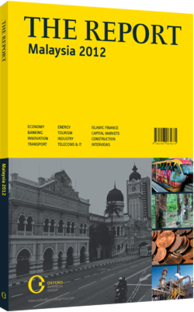Multicultural advertising: Recent studies examine the factors affecting consumer decisions
As a country containing a variety of religious orientations and ethnic and cultural groups – along with three major languages in addition to English – Malaysia often poses a major conundrum to advertisers and advertising agencies. They face the dilemma of whether an advertising campaign should try to appeal to all groups and be available in all languages or target a more specific audience.
CULTURAL EXCHANGE: For certain products that appeal only to a specific group, due, for example, to religious affiliations, the answer may be clear. Yet even here, there is a degree of fluidity. Malaysians often grow up sharing cultures and habits; for example, Muslim Malays may buy gifts for their Chinese neighbour’s New Year celebrations, while Hindu Tamil Malaysians are often generous to their Muslim friends at Hari Raya. Of course, cultural, ethnic and religious values still play a significant part in consumer decisions – in Malaysia as elsewhere. Exactly how this works and what the lessons are for the Malaysian advertising industry are currently the subjects of major study and debate, with some interesting conclusions.
THE MALAY HEARTLAND: A recent article in The Star by Harmandar Singh, the President of the Malaysian chapter of the International Advertising Association and regional CEO of Sledgehammer Communications, sets the tone for this debate. Singh takes up a train of thought often voiced by sector analysts that advertising campaigns have often been biased towards an urban, non-Muslim (and thus non-Malay) citizen. “Adex [advertising expenditure] spend is lopsided in favour of the non-Malay consumer,” Singh wrote. This is linked to a general perception that the ethnic Malays, who constitute the majority of the population, are lower income and rural-based. Hence, they are less attractive to advertisers. Yet this seems highly subjective and if it has been true, it is certainly contradicted by recent trends. Media Prima, one of the top media groups in the country, reported that in 1Q12 its print media titles had seen an overall growth in Malay language newspaper sales and contribution to adex. Indeed, its print market adex by language saw Bahasa’s share rise from 22% of the total in 2007 to 31% in 2011, while the number of Malay readers grew from around 5m to 6m. Meanwhile, English language, Chinese and Tamil readerships flatlined.
A key moment referred to in this discussion was a Sunsilk advert back in 2003 that used a female model whose hair remained covered throughout the ad. Appealing directly to pious Muslim Malay consumers, the ad has been widely credited with making Sunsilk a brand leader. It also created spin-offs in areas such as headscarves. Clearly, Malay consumers can be crucial to a brand’s success.
FINDINGS: In 2009 a study on Malay consumer styles was undertaken by Abdul Razak Kamaruddin from the University of Malaysia Terengganu and Kamarulzaman Kamaruddin from the University Pendidikan Sultan Idris. The research examined Malay consumers’ decision-making styles through a survey that looked at the correlation between religious and ethnic identity and consumer behaviour in Malays. It concluded that more religious Malays were highly concerned with issues of quality and value for money. These consumers took time to search for products that met these criteria and were often highly critical of any inferior goods or services. At the same time though, brand loyalty and consciousness were not strongly correlated to levels of religious piety. The survey also revealed that many felt confused by too much choice and lack of information.
How this contrasted with other ethnic and religious groups is open to question. Yet the findings, combined with the evidence that tapping the Malay market can be the key to brand leadership, are instructive. The surveyors call for greater consumer education, while also indicating that quality and value for money are the lead factors leading to purchases. This might also point to Malays being hard-headed consumers and the market thus tough – but the rewards may be all the sweeter.
You have reached the limit of premium articles you can view for free.
Choose from the options below to purchase print or digital editions of our Reports. You can also purchase a website subscription giving you unlimited access to all of our Reports online for 12 months.
If you have already purchased this Report or have a website subscription, please login to continue.

